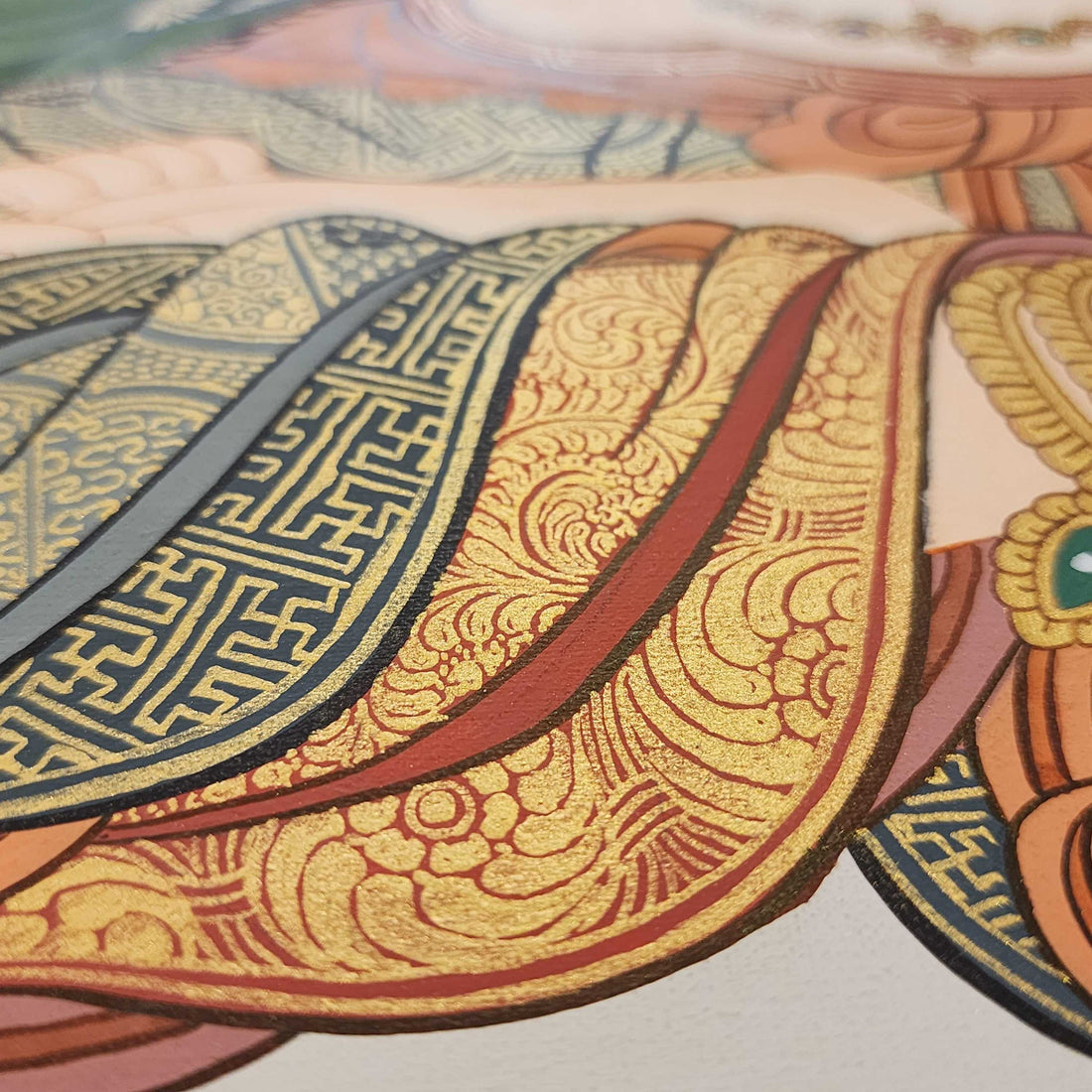
The Role of Color Symbolism in Tibetan Thangka Paintings
Share
The Role of Color Symbolism in Tibetan Thangka Paintings
Introduction
In Tibetan Thangka art, colors are never chosen at random. Every shade carries deep spiritual meaning. Rooted in Buddhist philosophy, the colors in a Thangka painting are believed to influence the mind, represent divine qualities, and guide meditation practice. Understanding this symbolism adds another layer of appreciation to these sacred artworks.
Why Color Matters in Thangka Art
In Buddhism, colors are linked to the Five Buddha Families, each representing different virtues and energies. Thangka artists use these colors to express spiritual truths, balance visual harmony, and help practitioners focus during meditation.
Key Colors and Their Meanings
White – Purity, peace, and spiritual awakening. Often associated with the deity Chenrezig (Avalokiteshvara).
Blue – Infinite compassion, vastness, and healing energy. Represents deities like Medicine Buddha.
Red – Passion transformed into wisdom, power, and protection. Linked to Amitabha Buddha.
Green – Action, accomplishment, and vitality. Often associated with Green Tara.
Yellow/Gold – Prosperity, stability, and the expansion of knowledge. Connected with Ratnasambhava Buddha.
Black – Fierce compassion, transformation, and the destruction of ignorance. Used for wrathful deities.
The Five Buddha Families
Each of the five main colors corresponds to one of the Buddha Families, symbolizing specific qualities that help overcome obstacles and cultivate enlightenment. Artists carefully balance these colors in Thangkas to create spiritual harmony.
Psychological and Meditative Impact
Beyond their symbolic meaning, Thangka colors influence the mind:
Calming the mind with blues and whites.
Inspiring confidence with golds and yellows.
Transforming emotions with reds and greens.
Modern Appreciation
Today, collectors and practitioners value the color symbolism in Thangka art not only for its spiritual significance but also for its cultural authenticity. Choosing a Thangka with meaningful colors allows you to connect with specific energies and intentions.
Conclusion
The colors in a Tibetan Thangka are more than artistic choices. They are sacred tools for meditation, spiritual transformation, and the preservation of Buddhist wisdom.
